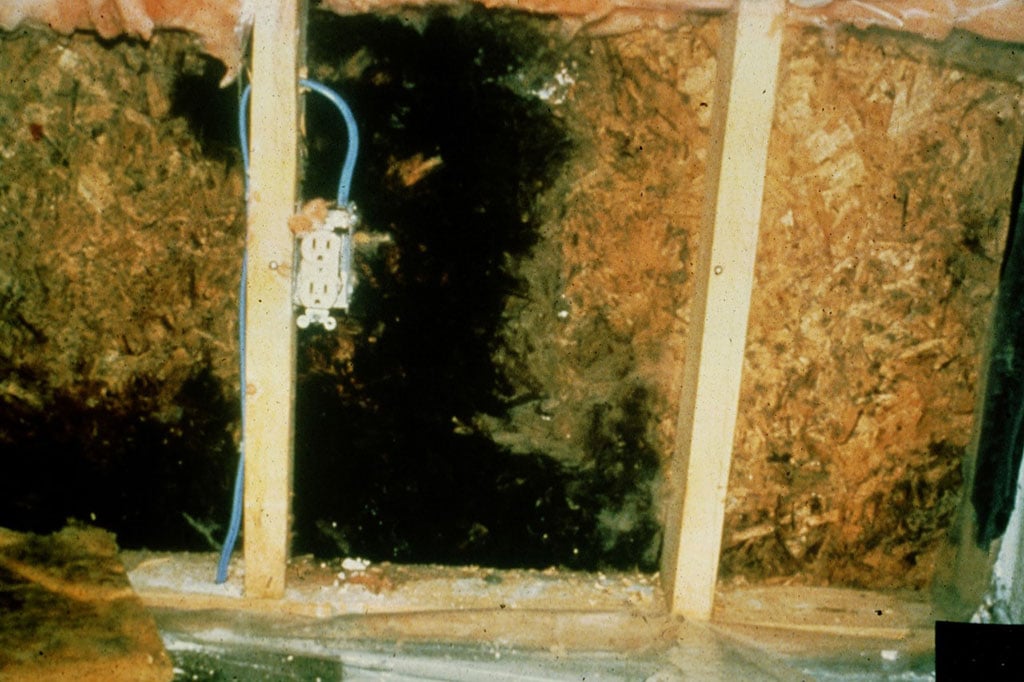Building Scientist Joe Lstiburek talks about the four things builders can do to prevent excess moisture during construction.
 One essential element to securing the long-term durability of any home is moisture control. In fact, much of what we know about applied building science today was the result of early work investigating the moisture impact on buildings. Joe Lstiburek Ph.D., founding principal of Building Science Corporation, recently spoke with Insulation Institute about the four things home builders can do to prevent excess moisture during new home construction.
One essential element to securing the long-term durability of any home is moisture control. In fact, much of what we know about applied building science today was the result of early work investigating the moisture impact on buildings. Joe Lstiburek Ph.D., founding principal of Building Science Corporation, recently spoke with Insulation Institute about the four things home builders can do to prevent excess moisture during new home construction.
- Mind Moisture Content in Wood Framing
As covered in our previous blog post, experts recommend wood moisture content of no more than 15 percent, not to exceed 19 percent for mold prevention. Higher than that and you’re setting the stage for mold development and other moisture-related problems like wood rot. Builders must not only measure and monitor the moisture content of the wood but also take steps to prevent moisture uptake. Since protecting wood framing is critical, Lstiburek recommends that builders dry in the building as soon as possible by installing building papers and glazing as soon as possible. “This will help keep the framing as dry as possible, thereby reducing the chances of exceeding that moisture threshold,” he said. “Construction moisture, in general, is a big problem because if you start with a wet building, it’s going to take longer to dry out, which can lead to some of the issues you see with nail pops and cracking drywall,” Lstiburek added.
- Air Seal + Insulate
Air-transported moisture – particularly through a building envelope that is not properly air sealed and insulated can cause a building structure to degrade. The best defense against this is to keep most air out of the building through effective air sealing prior to insulating. “Air sealing is key to preventing moisture in wall cavities, and it’s an element that can’t be overlooked when insulating a home,” Lstiburek said.
- Turn off the Furnace
Builders often use the central furnace in a new construction home as a heater during the finishing stages of construction, but this can cause major problems, including corrosion from chlorides, construction dust, and condensation in the furnace and/or vent system, even though the furnace may be a non-condensing surface under normal conditions. Turning the furnace off will prevent condensation within the furnace and duct system
- Use a Ventilator or Dehumidifier
There’s no way to avoid construction moisture completely, so Lstiburek recommends, in addition to the strategies outlined above, that builders use a ventilator or dehumidifier to remove moisture during construction. “Using a ventilator or dehumidifier will get the moisture out of the foundation, floor, and wood,” he said. Builders should aim for moisture content of less than 15 percent in wood and a relative humidity rating during construction of less than 70 percent.
Controlling Moisture in Walls
Lstiburek believes that while more stringent energy codes have been good for energy efficiency, they’ve increased the opportunity for building condensation. To control moisture buildup in the building envelope, he recommends using continuous insulation, an interior air barrier and an interior vapor barrier in cold climates.
“In terms of priority, first control for temperature, then air, then vapor, keeping in mind that moisture from exterior sources such as rain and heat produced humidity will occur,” he said. “Building envelope condensation is best controlled by using an exterior air barrier, ventilated cladding, and an exterior water control layer such as a house wrap or continuous insulation.”
Conclusion
While it’s not possible to remove all moisture sources from a construction site, the practices detailed by Lstiburek will help manage the most common causes of excessive and potentially harmful moisture issues in new construction homes.
Photo caption: Condensation, decay and mold due to air leakage transportation moisture into an exterior wall assembly at an unsealed electrical outlet.
